Mardi Himal Trek in June- June, the gateway to the monsoon season, might not be the first month that comes to mind when planning a trekking adventure. However, if you’re seeking a unique and captivating experience, the Mardi Himal Trek in June is an excellent choice.
Nestled in the Annapurna region of Nepal, this lesser-known trek offers breathtaking vistas, lush green landscapes, and a touch of adventure during the onset of the monsoon season. Join us as we delve into the allure and challenges of embarking on the Mardi Himal Trek in June!
Weather Condition of Mardi Himal Trek in June
Let’s take a look into the weather conditions you can expect during this time allowing you to make an informed decision and prepare accordingly for this incredible journey.
The Early Monsoon Season
June marks the beginning of the monsoon season in Nepal, with the southwest monsoon winds bringing moisture-laden clouds and occasional rain showers.

While the monsoon is known for its heavy rainfall, the early monsoon season is characterized by intermittent showers and relatively clearer skies, making it a viable time to embark on the Mardi Himal Trek.
Temperature
During June, the temperatures in the Mardi Himal region tend to be mild and pleasant. At lower altitudes, such as Pokhara (the starting point of the trek), the temperature can range between 20 to 30 degrees Celsius (68 to 86 degrees Fahrenheit).
Also Read: Mardi Himal Trek In March: Weather, Difficulty, Route, Travel Tips, and More
As you ascend higher along the trail, the temperature gradually drops, reaching around 10 to 15 degrees Celsius (50 to 59 degrees Fahrenheit) during the day and dropping further at night. It is advisable to pack layers of clothing to adapt to varying temperatures throughout the trek.
Precipitation
June is considered the beginning of the monsoon season and while rainfall is common it is relatively lighter compared to the later months of July and August. You can expect intermittent showers and cloudy skies during your trek, with rain showers typically occurring in the afternoon or evening.

It is essential to come prepared with waterproof clothing, such as a rain jacket and rain pants, to stay dry and comfortable during your trekking hours.
Visibility and Mountain Views
One of the highlights of the Mardi Himal Trek is the panoramic views of the Annapurna and Dhaulagiri mountain ranges. However, during the monsoon season, including June, the cloud cover can obstruct visibility at times.

While it is still possible to catch glimpses of the mountains and enjoy stunning vistas, it is essential to manage your expectations and be prepared for varying levels of visibility. Patience and flexibility are key, as weather conditions can change rapidly in the mountains.
Highlights of Mardi Himal Trek in June
While this trek is a hidden gem throughout the year, embarking on this journey in June unveils a unique experience that showcases the breathtaking beauty of the Himalayas amidst lush greenery and rhododendron forests.

Let’s delve into the highlights of the Mardi Himal Trek during June, unveiling the awe–inspiring landscapes, cultural encounters, and natural wonders that await intrepid explorers.
Mesmerizing Rhododendron Forests
June marks the monsoon season in Nepal, and the Mardi Himal Trek takes on a new allure as the mountains and forests come alive with vibrant colors. Trekking through lush green hills adorned with blooming rhododendron flowers of various hues creates a surreal atmosphere.

The bright red, pink, and white flowers set against the misty backdrop of the Annapurna range paint a picture-perfect landscape, making it a paradise for nature lovers and photographers.
Tranquil Trails and Fewer Crowds
Compared to the peak seasons of autumn and spring, June sees fewer tourists on the Mardi Himal Trek. This means you can enjoy a more peaceful and intimate journey, savoring the serenity of the trail and immersing yourself in the tranquil ambiance of the Himalayas.
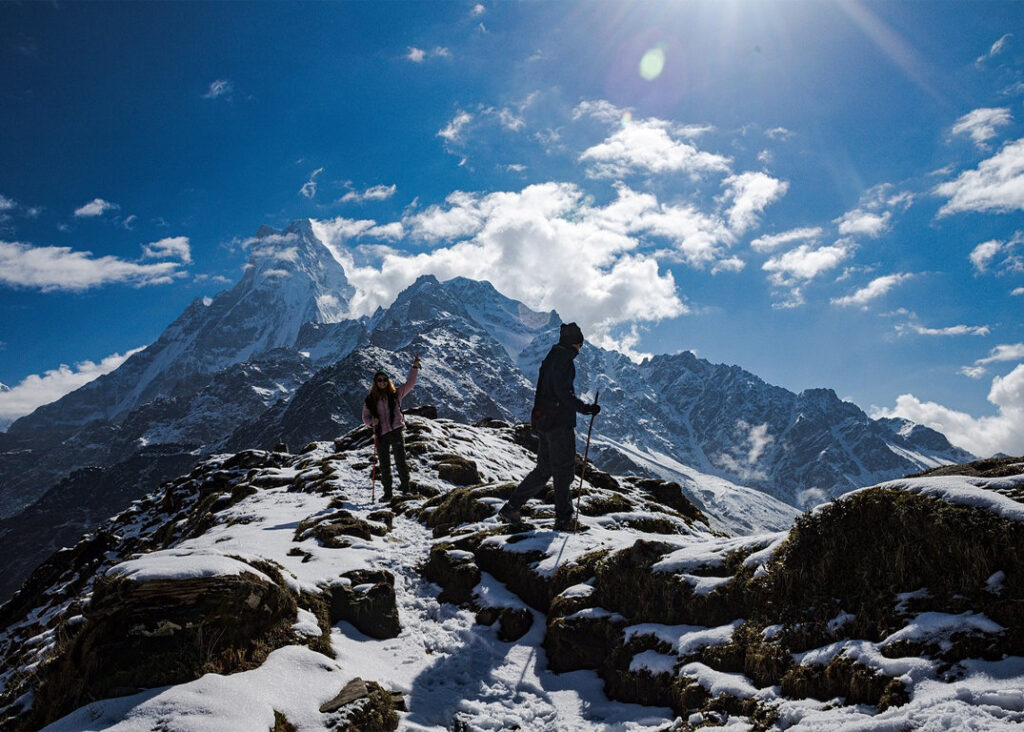
The reduced crowds also offer an opportunity for closer interaction with the local communities and a chance to experience their warm hospitality.
Stunning Mountain Views
Although the monsoon brings occasional rain and cloud cover, June also presents moments of clarity when the clouds part, revealing the awe-inspiring beauty of the Annapurna range. As you ascend higher, you’ll be rewarded with breathtaking views of Mardi Himal, Machapuchare (Fishtail), Annapurna South, Hiunchuli, and other prominent peaks.

The play of light and shadow on the mountains, coupled with the fresh rain-washed landscapes, creates an ethereal atmosphere that is truly unforgettable.
Cultural Encounters
The Mardi Himal Trek provides an opportunity to experience the rich cultural heritage of the region. Trekking through traditional villages, you can interact with the Gurung and Magar communities, known for their warm hospitality and vibrant traditions.
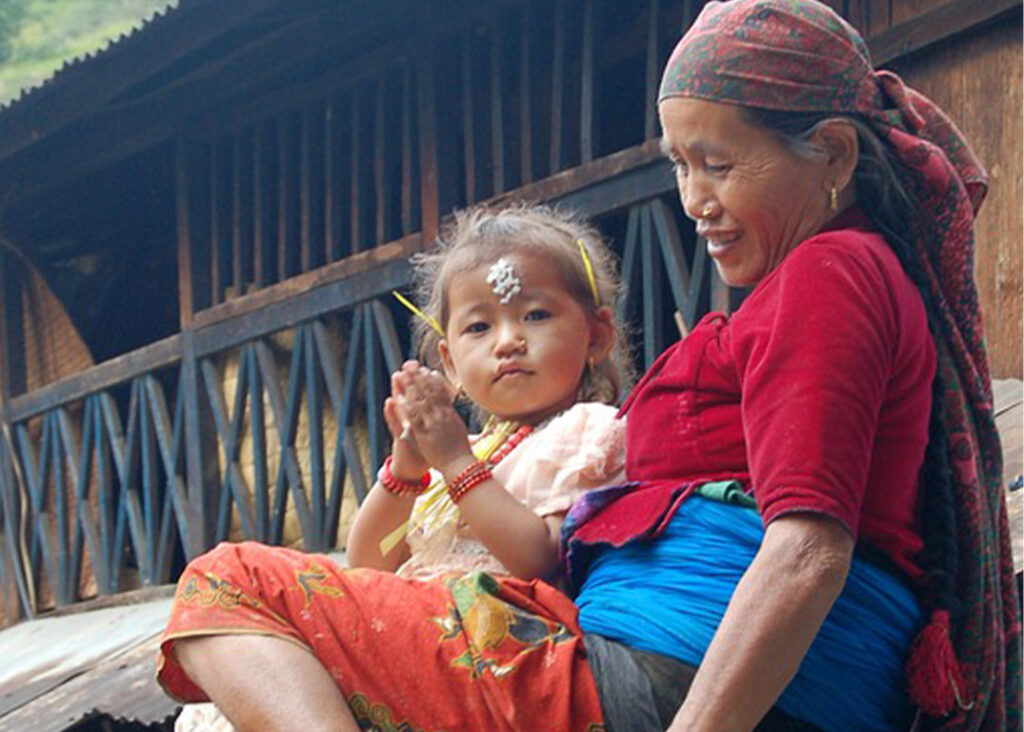
You’ll have a chance to observe their unique way of life, visit ancient monasteries, and even participate in cultural ceremonies or festivities if you’re fortunate enough to coincide with one during your trek.
Tranquil Trails and Fewer Crowds
Compared to the peak seasons of autumn and spring, June sees fewer tourists on the Mardi Himal Trek. This means you can enjoy a more peaceful and intimate journey, savoring the serenity of the trail and immersing yourself in the tranquil ambiance of the Himalayas.
Interesting: Mardi Himal Trek vs Annapurna Base Camp Trek
The reduced crowds also offer an opportunity for closer interaction with the local communities and a chance to experience their warm hospitality.
Refreshing Waterfalls and Streams
June is the time when the monsoon rains fill the rivers and streams, creating a symphony of cascading waterfalls along the trekking trail. The sight and sound of these pristine water bodies add a refreshing touch to the journey, offering picturesque spots to rest and rejuvenate.
Also Read: Mardi Himal Trek in April: Temperature, Difficulty, Travel Tips, and More
The crystal–clear streams and gushing waterfalls provide an opportunity to connect with nature and immerse yourself in its soothing ambiance.
Authentic Cultural Homestays
For a truly immersive experience, consider staying in traditional homestays along the trekking route. This allows you to get a glimpse into the daily lives of the local communities, experience their warm hospitality, and savor delicious homemade meals.
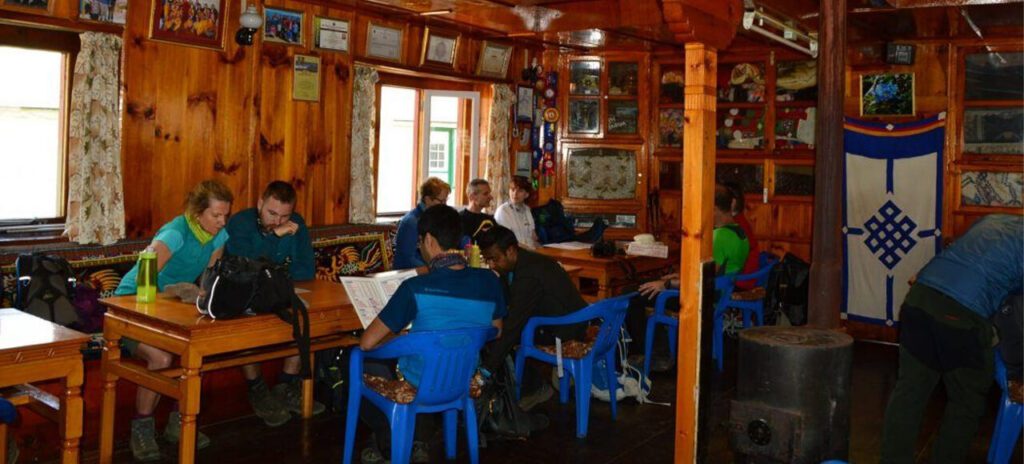
Sharing stories around the fireplace in the cozy ambiance of a traditional homestay is a fantastic way to connect with the culture and traditions of the Himalayan people.
Off the Beaten Path Adventure
While popular treks like the Annapurna Circuit and Everest Base Camp tend to attract larger crowds, the Mardi Himal Trek offers a more secluded and intimate experience. Trekking in June allows you to escape the crowds and embrace the tranquility of the trail.
You’ll often find yourself walking on pristine paths surrounded by untouched nature, allowing you to immerse yourself fully in the beauty and solitude of the Himalayan wilderness.
Monsoon Magic and Misty Landscapes
The monsoon season brings its own unique charm to the Mardi Himal Trek. The mist–covered landscapes and the interplay of clouds with the mountains create a mystical atmosphere that is hard to replicate at any other time of the year. Walking through the misty forests, with occasional glimpses of the majestic peaks, offers a sense of adventure and adds an element of mystery to the trek.
Kathmandu to Mardi Himal Trek
Here’s a step-by-step guide on how to get to Mardi Himal from Kathmandu:
Kathmandu to Pokhara
The first leg of your journey is to reach Pokhara which is the gateway to the Annapurna region.

You have several options to travel from Kathmandu to Pokhara:
Flight
The quickest way is to take a domestic flight from Kathmandu to Pokhara. Several airlines operate daily flights, and the journey takes around 25-30 minutes.
Bus
You can also opt for a tourist bus, which is a more economical option. The bus journey takes around 6-7 hours, depending on road conditions.
Pokhara to Kande
Once you reach Pokhara, you’ll need to travel to Kande, which is the starting point for the Mardi Himal trek. You can hire a private vehicle or take a shared jeep from Pokhara to Kande.

The journey usually takes around 1-2 hours, depending on the traffic and road conditions.
Kande to Australian Camp
From Kande, the trek begins. The first day of the trek involves hiking from Kande to Australian Camp. The trail passes through beautiful rhododendron forests and offers stunning views of the Annapurna and Dhaulagiri mountain ranges.
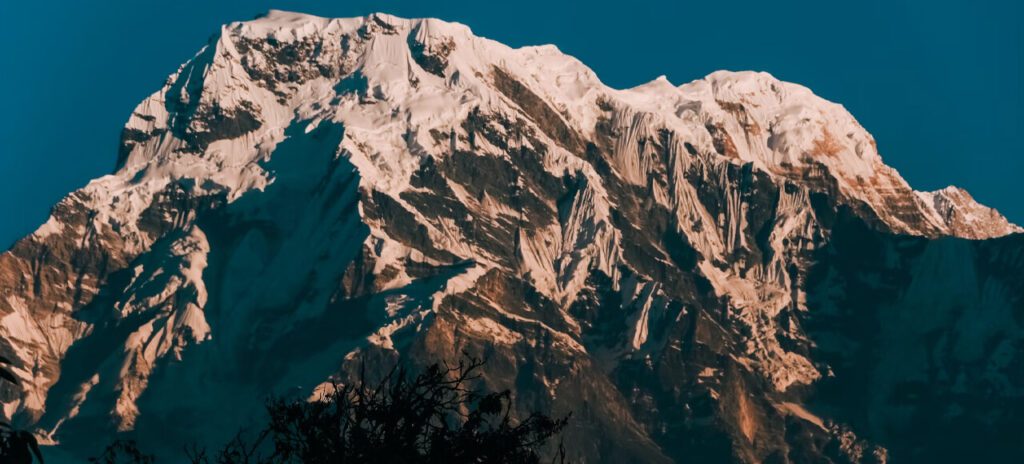
Australian Camp is a popular overnight stop on the Mardi Himal trek.
Australian Camp to Forest Camp
On the second day, you’ll trek from Australian Camp to Forest Camp. The trail takes you through dense forests where you can observe various flora and fauna.
Read: Mardi Himal Trek in May
Forest Camp is another popular rest point on the Mardi Himal trek, surrounded by lush greenery.
Forest Camp to High Camp
On the third day, you’ll continue your trek from Forest Camp to High Camp. As you ascend, the vegetation changes, and you’ll be treated to panoramic views of the Annapurna and Machhapuchhre (Fishtail) peaks. High Camp is the final stop before reaching Mardi Himal Base Camp.
High Camp to Mardi Himal Base Camp and back
On the fourth day, you’ll hike from High Camp to Mardi Himal Base Camp. The trail gradually climbs, and you’ll witness breathtaking views of the surrounding mountains, including the Mardi Himal itself.

After spending some time at the base camp, you’ll retrace your steps back to High Camp.
High Camp to Siding Village
On the fifth day, you’ll descend from High Camp to Siding Village. The trail passes through picturesque landscapes and traditional Gurung villages. Siding Village offers a unique cultural experience and a chance to interact with the local community.
Also Read: Mardi Himal Trek in January: Weather, Difficulty, Temperature, Travel Tips, and More
Siding Village to Lumre and drive to Pokhara
On the final day of the trek, you’ll hike from Siding Village to Lumre. From Lumre, you can hire a private vehicle or take a shared jeep back to Pokhara.
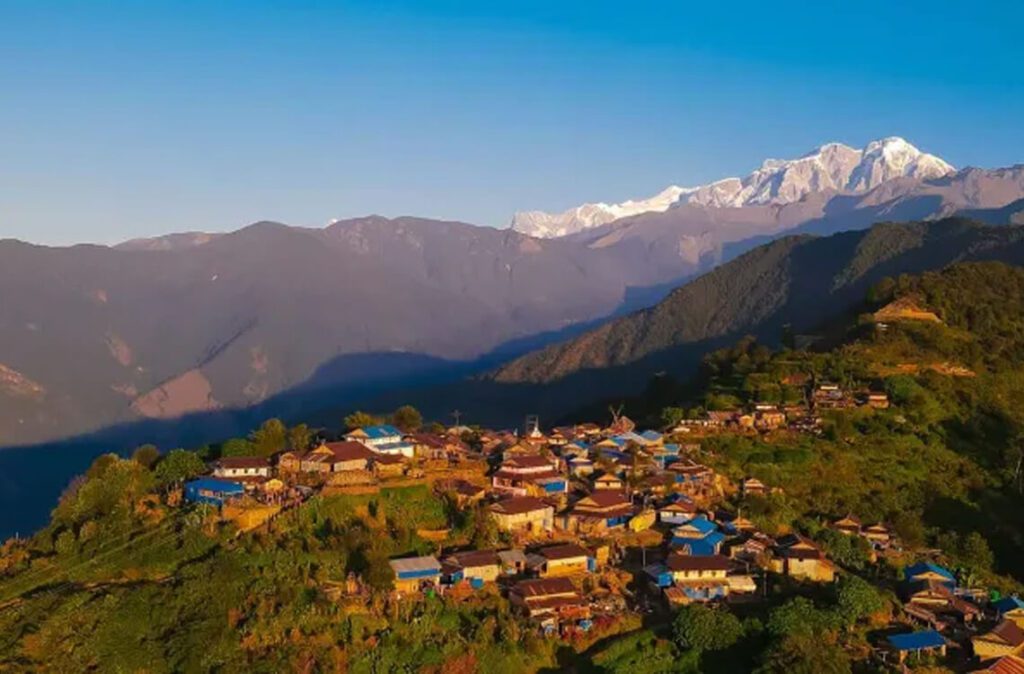
Pokhara to Kathmandu
Finally, you’ll travel from Pokhara back to Kathmandu using the same transportation options mentioned earlier, either by flight or bus.
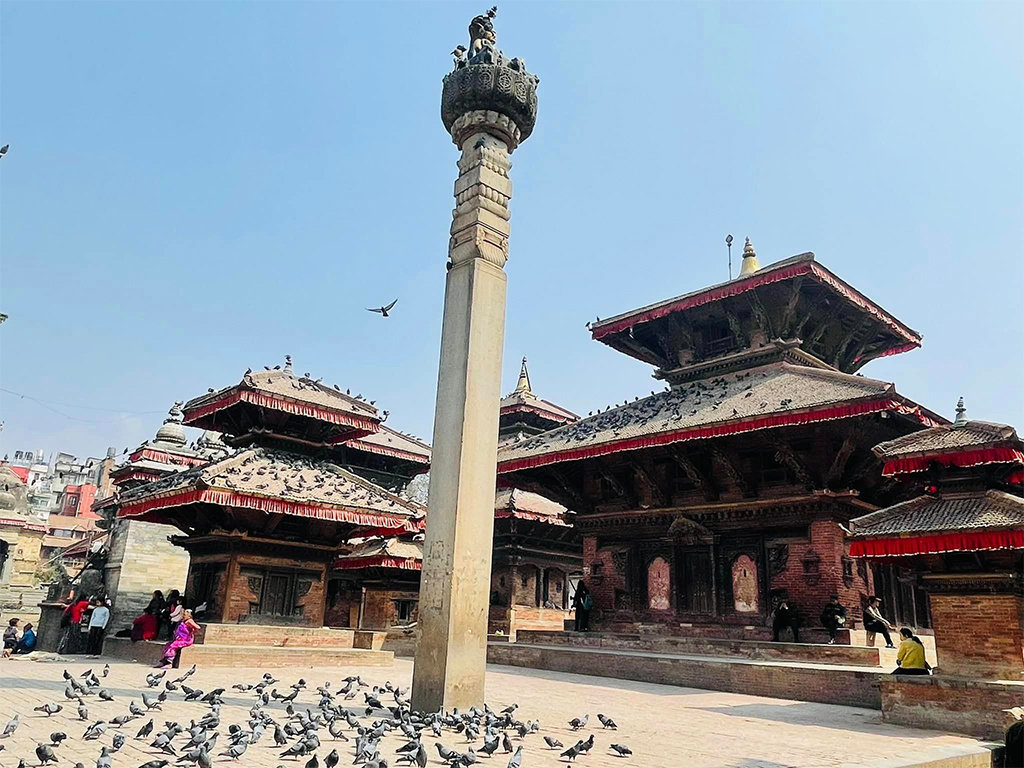
The crowd in Mardi Himal Trek in June
The Mardi Himal Trek in June which is the beginning of the monsoon season in Nepal, is generally less crowded compared to the peak trekking seasons of spring and autumn. However, the specific level of crowds can vary depending on various factors including the current travel trends and conditions.
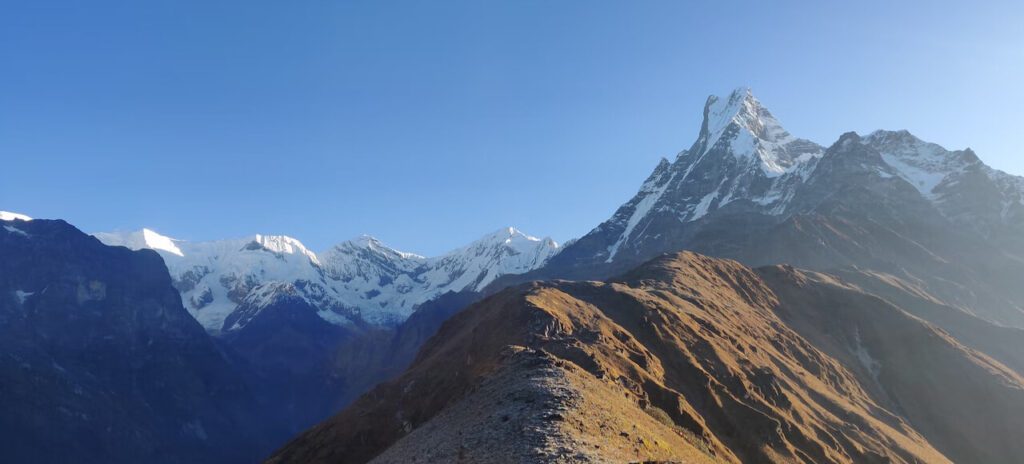
During the start of the monsoon season, the weather in the Mardi Himal region can be unpredictable, with the possibility of rain showers and cloudy skies. This weather pattern often deters a significant number of trekkers, resulting in fewer people on the trail compared to the popular seasons.
Side Treks
During the Mardi Himal Trek in June, at the start of the monsoon season, there are several favorable side treks you can consider. Here are a few options:
Badal Danda (Cloud Hill)
Located at an altitude of approximately 3,210 meters, Badal Danda is a hilltop viewpoint that offers stunning vistas of the Annapurna and Dhaulagiri mountain ranges. The name “Badal Danda” translates to “Cloud Hill,” and it’s known for its mystical atmosphere when the clouds roll in.
Sidingba Village
Sidingba is a small, off-the-beaten-path village that lies in a tranquil setting. It’s an ideal place to experience the authentic rural lifestyle of the Nepalese people and witness their traditional farming practices.
Pothana
Pothana is a charming village nestled amidst lush forests and terraced fields. It’s a popular stopover point on the Mardi Himal Trek, offering splendid views of the surrounding landscapes. You can explore the village and interact with the locals to learn about their culture and way of life.
Ghandruk Village
Although slightly off the main Mardi Himal Trek route, Ghandruk is worth considering for a side trek.
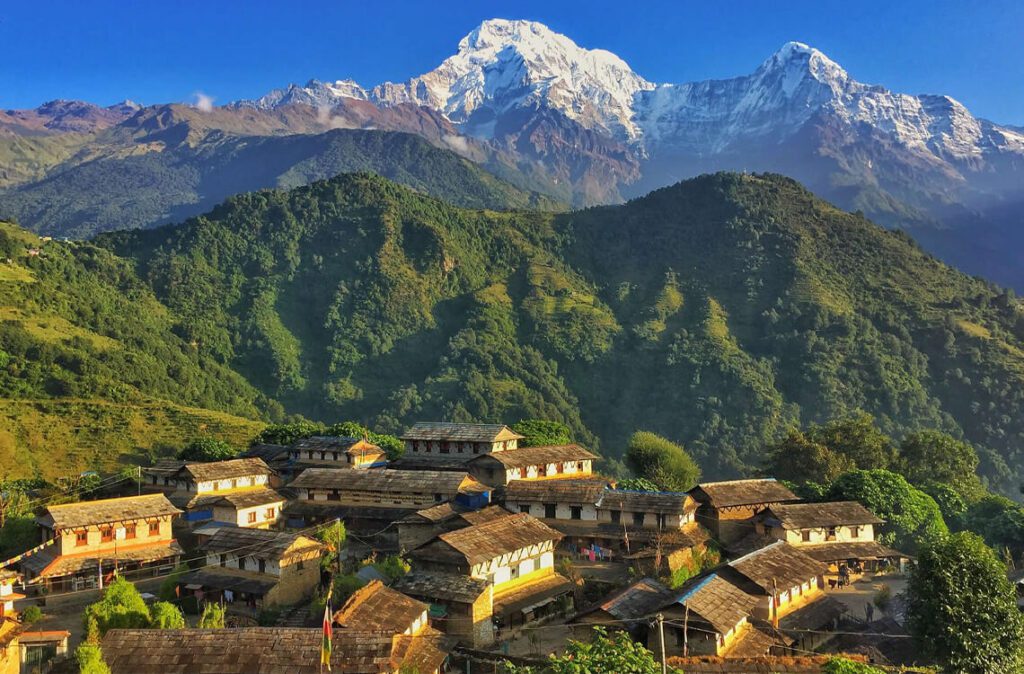
It’s a large Gurung village renowned for its rich cultural heritage and breathtaking mountain vistas. The village offers a glimpse into traditional Gurung architecture and lifestyle.
Also Read: Gurung Hill Trek
Ghorepani Poon Hill
If you have additional time and want to extend your trek, you can incorporate a side trip to Ghorepani Poon Hill.

It’s a famous viewpoint known for its awe-inspiring sunrise views over the Annapurna and Dhaulagiri mountain ranges.
Difficulty Level of Mardi Himal Trek in June
The Mardi Himal Trek in June, during the onset of the monsoon season, presents a unique and exhilarating challenge. Let’s take a look into the difficulty level of the Mardi Himal Trek in June and explore why it’s a remarkable adventure worth undertaking.
Weather Challenges
The monsoon season in Nepal typically begins in June, bringing rain and clouds to the region. This can create several challenges for trekkers on the Mardi Himal Trail. The continuous rainfall increases the difficulty of the trek, making the trails slippery and muddy.
Also Read: Mardi Himal Trek in February: Weather, Difficulty, Travel Tips, and More
Therefore, it is essential to be prepared with appropriate gear, including waterproof clothing, sturdy boots, and trekking poles to maintain stability on wet terrain. The constant drizzle may limit visibility, adding an extra element of adventure to the journey.
Trail Conditions
Due to the monsoon rains, the Mardi Himal Trail experiences fewer trekkers during this time of year, providing a sense of solitude and tranquility. However, the reduced foot traffic also means that the trail may be less well-defined and more challenging to navigate. It is crucial to have a reliable trekking guide or a good understanding of the route to ensure you stay on the right path.

Additionally, the rain may cause landslides, which can temporarily disrupt the trail. Staying updated with local weather conditions and being flexible with your itinerary is important for a safe and successful trek.
Increased Rainfall
June marks the beginning of the monsoon season in Nepal, and trekkers should be prepared for heavy rainfall. The continuous downpour can make the trails extremely slippery and muddy, making it more challenging to maintain balance and progress. It is crucial to exercise caution while trekking and take slower, deliberate steps to avoid any accidents or injuries.
You May Also Like: Ghandruk: Gurung Cultural Gem
Leeches and Insects
The moist environment during the monsoon season attracts leeches and other insects. Trekkers may encounter leeches on the trail, particularly in areas with dense vegetation or waterlogged sections.

Wearing leech socks or applying insect repellent can help protect against these creatures. It is important to remain vigilant and regularly check your clothing and body for any leeches or insect bites.
Limited Mountain Views
The monsoon clouds and mist often obscure the panoramic mountain views that the Mardi Himal Trek is known for. Trekkers should be prepared for limited visibility and the possibility of not witnessing clear, unobstructed vistas of the Himalayan peaks. However, the cloudy atmosphere creates its own unique charm and offers a different perspective on the surrounding landscapes.
Let our expert team at Asian Heritage Treks and Travel take care of everything — from guided tours to personalized packing tips and travel arrangements.
Plan a fun adventure







